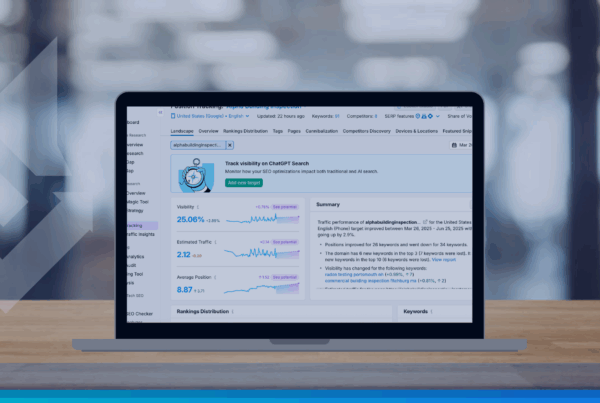Writing a great newsletter does more than mere marketing—it’s content that builds bonds, shares value, and keeps your audience clicking.
Standing out in a full inbox can feel impossible, but with a focused and data-driven strategy, you can finesse newsletter content that engages the right readers and gets real results.
These are our top 11 tips to build and sustain momentum for your newsletter.
1) Know Your Customer
Firstly, and most importantly, your newsletter hits the mark only when you know who’s reading it. Are your readers homeowners looking for quick fixes? Property managers needing maintenance services? Maybe they’re real estate agents.
Define your audience and tailor your content to what they care about.
For example, if they’re small business owners, offer practical tips they can implement right away. If they’re homeowners, break down relevant tips into easy steps. Speak their language to build trust and keep them engaged.
2) Keep It Simple and Focused
In a world full of distractions, simplicity wins. Don’t overcomplicate things—people appreciate newsletters that get to the point. Focus on one main idea per newsletter and communicate it in a straightforward, no-frills way.
For example, if you’re sharing a tip about improving indoor lighting, make it clear, simple, and easy to follow.
Break up your text with bullet points, headers, and short paragraphs so readers can quickly scan for the key takeaways.
Quick Example
- Too much at once: “Your exterior maintenance strategy should include pressure washing, gutter cleaning, roof inspections, window washing, and deck sealing.”
- Simple, focused: “Start with pressure washing to keep your home’s exterior looking great and protected from damage.”

3) Lead with Value
Every time you send a newsletter, it should offer something your readers can use right away. Rather than focusing on marketing in every part of each newsletter, think about writing content that will be most helpful to them.
Sharing content that solves a problem, answers a question, or provides useful tips, shows that you value their time and want to help. For example, you might:
- Break down a commonly searched task into easy steps they can follow right now.
- Share free resources like templates or checklists they can use to save time.
- Offer tips or insights on new trends, with suggestions on how to apply them.
When done right, the results speak for themselves—email marketing has an average return on investment (ROI) of $36 for every $1 spent. Leading with valuable content keeps your audience engaged and builds trust over time.
4) Personalize Your Message
Personalization is about making your content feel relevant to each reader. It goes beyond using their name to address their specific interests. When someone knows you understand them, they’re more likely to engage with you.
To make it happen, segment your readers based on their behaviors, preferences, or past interactions. If someone recently interacted with your content on home maintenance, send them useful tips or recommendations for tools and materials.
If another group is more focused on pest control, share seasonal pest prevention advice that’s timely and practical. Even simple details like referencing their location or a recent service inquiry can make your message feel more personal.
5) Write Catchy Subject Lines
Your subject line is the first impression your email makes, so it has to count. A good subject grabs attention and compels readers to open the email. Beyond that, it also needs to be true and reflect the content inside.
Keep it clear, engaging, and, most importantly, relevant to your audience’s needs. Some best practices for making sure your subject lines stand out:
- Be Specific: Let readers know exactly what to expect. Instead of “Newsletter Update,” try “5 Simple Decor Hacks for Fall”, or some other reference to your content.
- Create Curiosity: Pique their interest without being too vague. Something like, “Are You Missing Out on Easy Decor Tips?” invites them to learn more.
- Keep It Short: Aim for under 45 characters so it’s easy to read on a desktop or mobile.
- Encourage Action: Start with verbs to encourage readers to act. A subject line saying, “Hit Refresh with These Easy Landscape Wins” is more engaging than just stating a fact.
Testing different subject lines and paying attention to open rates can also help you figure out what resonates best.

6) Make it Easy to Skim
Most readers won’t read your newsletter or other marketing content word-for-word—they’ll scan your writing for the key points. To keep them engaged, make your content easy to skim by breaking it up into digestible sections.
Use headers, bullet points, and short paragraphs to guide them through the most important information quickly.
Some tips for staying skimmable:
- Use Compelling Headers: Each section should have a clear, concise header that tells readers exactly what it’s about.
- Add Bullet Points: Where appropriate, use bullet points to list out actionable tips or important takeaways. This keeps information bite-sized and easy to absorb.
- Keep Paragraphs Short: Stick to 2-3 sentences per paragraph. This keeps the content manageable and prevents overwhelming readers.
The easier it is to scan, the more likely your audience will stay engaged and absorb the key information.
7) Use Clear Calls to Action
Every newsletter should guide your readers toward taking the next step. A clear, engaging call to action (CTA) helps direct them exactly where you want them to go. That could be reading a blog post, booking a service, making a call, or signing up for your newsletter.
Keep them simple and actionable. Phrases like “Learn More,” “Get Started,” or “Claim Your Free Estimate” work because they are direct and tell the reader exactly what to expect.
Avoid being vague or too pushy—subtle but clear language encourages readers without overwhelming them. A few ways to make your CTAs even more effective:
- Use Buttons: CTAs in button form are easier to spot and click, especially on mobile devices.
- Make it Action-Oriented: Focus on the benefit for the reader, such as “Save on Your Next Service” or “Improve Your Home’s Energy Efficiency.”
- Keep it Above the Fold: Place your main CTA in a visible spot so it’s easy for skimming eyes to find without scrolling too far.
8) Eye-Catching Visuals
The right visuals can instantly grab attention and make your newsletter easier to digest. It’s not about filling space—it’s about using images that support your message and help readers connect with the content.
Here’s how to do it:
- Make sure images tie directly to your message.
- Use infographics to break down complex topics into understandable resources.
- Keep it neat and avoid clutter or an overwhelming experience.
- Make sure your images load quickly and look great on any device
Thoughtful, relevant layouts and designs make your newsletter more enjoyable to scroll through!
9) Mobile-Friendliness Matters
Most people check their emails on their phones, so your newsletter needs to look great on small screens.
If your content is hard to read on mobile, you risk losing engagement. Keep it phone-friendly with:
- Use Responsive Design: Make sure your content adjusts to fit different screen sizes.
- Keep Text Brief: Short paragraphs and concise text make it easier to scroll through quickly.
- Tap-Friendly CTAs: Make sure buttons and links are large enough to click easily.
Optimizing for any device means readers can engage with your content or your site anywhere, anytime.
10) Test to See What Works
Improving your newsletter starts with testing what works and adjusting based on feedback. Each campaign gives you valuable insights into what resonates with your audience.
Consider these strategies:
- A/B Test Subject Lines: Compare two versions to see which generates better open rates.
- Analyze Click-Through Rates: Identify which content or CTAs drive the most clicks.
- Use Data to Adjust: Refine your approach with every newsletter, using analytics to improve.
Testing and adapting keeps your content improving, makes your data like jet fuel, and helps your newsletter continue to work for you.
11) Stay Consistent
Consistency builds trust and keeps your audience engaged over the long term. When your readers know when to expect your newsletter, they’re more likely to open it and stay connected.
Here’s how to maintain consistency:
1) Pick a Schedule: It should make sense for both your team and audience—weekly, bi-weekly, or monthly. Try to stick with it!
2) Prioritize Quality: Avoid delivering more mail to your customers’ inboxes without more value.
3) Test the Timing: Pay attention to when your audience opens and engages with your emails. Adjust your send times to match their habits.

Final Thoughts
Shining newsletter content is about more than sending marketing updates—it’s about the impact your writing has on the other end.
When you know your audience, simplify your message, and stay consistent, your emails will become a reliable resource in their inbox. Looking for expert help to take your newsletters further? Schedule your WolfPack consultation today and get a custom proposal.




